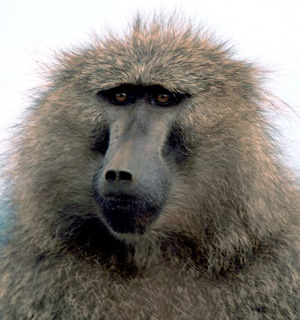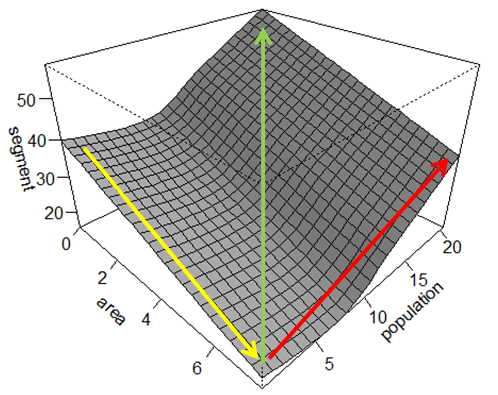Hello Hello and Happy New Year,
So a new article appeared on the internet late last year by Coolidge, Overmann and Wynn (2010) (hereafter referred to as COW because it makes me smile). It’s a really short sweet little paper and you should read it as recursion is perhaps one of the hottest topics around language evolution. This generally stems from Hauser, Chomsky and Fitch’s (HCF, 2002) claim that it is the only feature of language unique to humans. I thought it would be useful to outline some of the issues surrounding it as put forward by the COW paper due to its high-profile, controversial and important position within current issues in language evolution.
History
Recursion was first talked about within the field of linguistics by Bar-Hillel in 1953. This was before Chomsky included the concept in his Generative Grammar in 1956.
It wasn’t until 2002 that HCF made the claim that recursion was the only feature of language which was included in the faculty of language in the narrow sense (FLN) and was therefore unique to humans.
Definition
The article outlines two definitions of recursion (within linguistics):
(1) embeddedness of phrases within other phrases, which entails keeping track of long-distance dependencies among phrases
(2) the specification of the computed output string itself, including meta-recursion, where recursion is both the recipe for an utterance and the overarching process that creates and executes the recipe
I always worry when there is more than one definition for a thing because this often results in people talking past eachother or getting confused within their own arguments. These definition are also important to define before one starts making claims about whether recursion is present in species outside of humans or what people are talking about when referring to the evolution of recursion.
Evolutionary Scenarios
The paper also outlines two evolutionary scenarios for the adaptive value of recursion in human language.
(1) The gradualist position posits precursors, such as animal communication and protolanguages, and holds that the selective purpose of recursion was for communication.
(2) The saltationist position assumes no gradual development of recursion and posits that it evolved for reasons other than communication
The latter of these is the stand point taken by the HCF paper. Reasons for recursion evolving if one discounts communication could include the increase of working memory for other reasons or spacial navigation.
Pinker and Jackendoff (2005) argue that since recursion only exists in language to express recursive thoughts it must have pre-existed language.
COW (2010) points out that this is all very well but the question remains of what are recursive thoughts and why are they adaptive? These recursive acts may exist for the purposes of diplomatic speech, perlocutionary acts or for prospective memory and cognition (these are discussed at greater length in COW). These assume that the adaptive force was a social one which before Pinker and Jackendoff was not considered because recursion is often understood away from the social context of speech acts in the realm of mathematics.
Unique to Humans?
An often cited example debunking recursion’s importance to human language is the Piraha tribe who apparently do not have it (Everett 2005). The data from Everett is anecdotal, from one source and sketchy. Even if one was to accept the claims of lack of recursion they can be attributed to other factors such as cultural constraints or (although I think this is going a bit far, but then Bickerton always does go a bit too far) claiming the Piraha tribe have an underlying neurophysiological deficiency such as a limited working memory capacity or an extreme case of acquisitional delay.
COW then covers several animal studies which claim that recursion is present in animals including starlings and various monkeys. These are subject to the claim that the ability to acquire a phrase structure grammar means the presence of recursive ability (which is bollocks). These studies also fall short when one considers that starling’s songs are used to communicate emotional states, not recursive thoughts.
References
Bar-Hillel Y. (1953) On recursive definitions in empirical science. Proceedings of the 11th International Congress of Philosophy, Brussels. 1953, 5:160–165.
Coolidge, F., Overmann, K., & Wynn, T. (2010). Recursion: what is it, who has it, and how did it evolve? Wiley Interdisciplinary Reviews: Cognitive Science DOI: 10.1002/wcs.131
Hauser MD, Chomsky, N, Fitch (2002) The faculty of language: what is it, who has it and how did it evolve? Science, 298:1569-1579
http://www.st-andrews.ac.uk/~wtsf/downloads/HCF2002.pdf
 Analogy is a trait thought to be uniquely human and the origin is largely unknown. Recent studies have suggested that some language trained apes can find relations between relations, which is thought to be what is at the root of analogy. However, a new study in the journal Psychological Science has tested baboons using shapes with matching features. These baboons were able to match pairs which had matching features and pairs which had no matching features.
Analogy is a trait thought to be uniquely human and the origin is largely unknown. Recent studies have suggested that some language trained apes can find relations between relations, which is thought to be what is at the root of analogy. However, a new study in the journal Psychological Science has tested baboons using shapes with matching features. These baboons were able to match pairs which had matching features and pairs which had no matching features.
